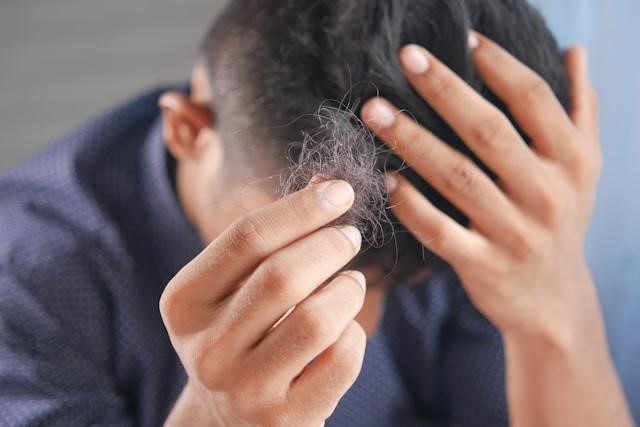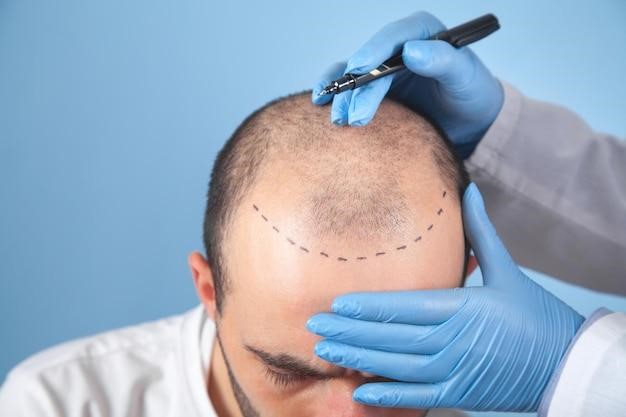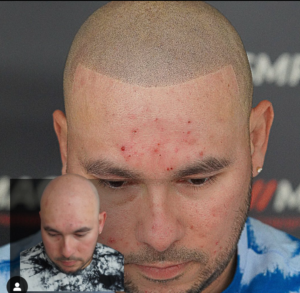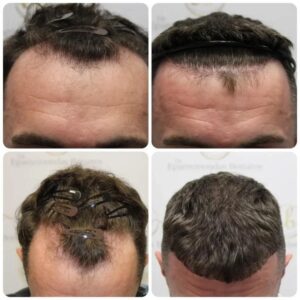Losing your hair at any point can be distressing, but it is almost inevitable, as millions of men and women suffer from various hair loss conditions. Although hair restoration is popular with men, women can also successfully perform hair transplant surgery.
Hair loss treatment is a big issue as it can affect self-esteem and confidence. Canadian Dermatology research revealed that 50% of men suffer from male pattern baldness, while women are likely to suffer from hair thinning by age 50.
Fortunately, advancements in medical science have provided various solutions, with surgical hair implants being a highly effective option.
This blog post delves into the process of achieving a full head of hair with surgical hair implants, covering everything from the basics of the procedure to the potential benefits and considerations.

Table of Contents
Key Takeaway
Surgical hair implants, also known as hair transplants, have revolutionized the field of hair restoration. This procedure offers a permanent solution for those struggling with hair thinning and baldness, providing natural-looking results that significantly enhance one’s appearance.
Unlike temporary fixes or topical treatments, hair implants address the root of the problem by redistributing hair follicles from denser areas to the thinning or balding regions.
What are Surgical Hair Implants?
Surgical hair implants involve extracting hair follicles from a donor area (usually the back or sides of the scalp, where hair is more resistant to balding) and implanting them into the balding or thinning areas. This procedure can be performed using two primary techniques: Follicular Unit Transplantation (FUT) and Follicular Unit Extraction (FUE).
Follicular Unit Transplantation (FUT)
FUT, also known as strip harvesting, involves removing a strip of scalp from the donor area. The strip is dissected into individual follicular units under a microscope implanted into the recipient site. This method allows for transplanting many grafts in a single session, making it suitable for individuals with extensive hair loss.
Follicular Unit Extraction (FUE)
Conversely, using a specialized punch tool, FUE involves extracting individual hair follicles directly from the donor area. These follicles are then implanted into the balding or thinning areas. FUE is a minimally invasive technique, resulting in tiny, nearly invisible scars and a quicker recovery time than FUT. It is ideal for those who prefer a less invasive option or wish to avoid linear scarring.
The Surgical Hair Implant Procedure
Undergoing surgical hair implants involves several key steps, each crucial to achieving optimal results.
Consultation and Assessment
The journey begins with a thorough consultation with a qualified hair transplant surgeon. During this assessment, the surgeon evaluates the patient’s hair loss pattern, discusses their expectations, and determines the most suitable technique (FUT or FUE) based on their needs.
Preparation and Planning
Once the technique is chosen, the surgeon will outline the donor and recipient areas, ensuring a natural and aesthetically pleasing result. The donor area is typically shaved to facilitate extraction, while the recipient area is prepared for implantation.
Extraction and Implantation
In the case of FUT, a strip of scalp is removed, and the individual follicular units are meticulously separated. For FUE, the surgeon uses a punch tool to extract individual follicles. These follicles are then carefully implanted into the recipient site, paying close attention to the natural hair growth pattern to ensure seamless integration.
Post-Procedure Care
After the procedure, patients receive detailed instructions on post-operative care. This may include guidelines on washing the hair, avoiding strenuous activities, and taking prescribed medications to prevent infection and promote healing. Follow-up appointments are scheduled to monitor progress and address any concerns.

Image Credit: Pexels
Benefits of Surgical Hair Implants
Surgical hair transplants offer numerous advantages, making them a preferred choice for many individuals seeking a permanent solution to hair loss. Here are some of the major reasons why a surgical hair treatment would be a good idea:
Natural-Looking Results
One of the primary advantages of surgical hair implants is the natural-looking results they provide. Since the transplanted hair follicles come from the patient’s scalp, they blend seamlessly with the existing hair, creating a natural and pleasing appearance.
Permanent Solution
Unlike temporary treatments or topical solutions, surgical hair implants offer a permanent solution to hair loss. The transplanted hair follicles are typically resistant to the effects of hormones that cause balding, ensuring long-lasting results.
Improved Self-Confidence
Restoring a full head of hair can significantly boost self-esteem and confidence. After undergoing the procedure, many individuals report feeling more comfortable and self-assured in social and professional settings. Hair restoration can also give you a more pleasing appearance and youthful feeling.
Minimal Downtime
While the recovery period may vary depending on the technique, most patients experience minimal downtime after surgical hair implants. FUE, in particular, is known for its quicker recovery time and less noticeable scarring, allowing individuals to resume their daily activities relatively soon.
Considerations and Potential Risks
Like any surgical procedure, hair implants come with certain considerations and potential risks that should be thoroughly discussed with a qualified surgeon.
Cost
The cost of surgical hair treatment can vary depending on factors such as the extent of hair loss, the chosen technique, and the surgeon’s expertise. It is important to consider this investment and weigh it against the long-term benefits. With possible expenses of between $4000 and $15000, it is safe to say that this procedure is not the cheapest for the average person.
Possible Side Effects
Common side effects of surgical hair implants include swelling, bruising, and temporary shedding of the transplanted hair. While these effects are generally mild and temporary, it is essential to follow post-operative care instructions to minimize any potential complications.
Surgeon Expertise
Choosing a skilled and experienced surgeon is crucial to achieving optimal results. Patients should thoroughly research and select a board-certified surgeon with a proven track record for successful hair implant procedures.
Although this process has a few side effects, you can also explore alternative, less invasive, non-surgical methods.
Conclusion
Surgical hair implants offer a transformative solution for individuals struggling with hair loss. They provide natural-looking, permanent results that can significantly enhance one’s appearance and self-confidence. Understanding the procedure, benefits, and considerations of surgical hair implants is vital for individuals to make informed decisions and embark on their journey to achieving a full head of hair.
Consulting with a qualified hair transplant surgeon is the first step towards regaining a fuller, more vibrant head of hair and reclaiming one’s confidence.
Want to explore our scalp Micropigmentation at Mac SMP? Book a FREE session now.
Enjoy This Article? You May Also Like:
- Alopecia baldness explained: Causes, treatments, and How Mac SMP can Help
- Balding Hair: Myths Vs. Facts And Effective Strategies To Combat It
- Hair Loss Thinning: Causes, Prevention And Treatment Options
- Scalp Micropigmentation Training: From Beginner To Mastery – The Ultimate Guide To Becoming An SMP Technician
- Hair Thinning: Why Your Hair Are Thinning And What To Do About It



